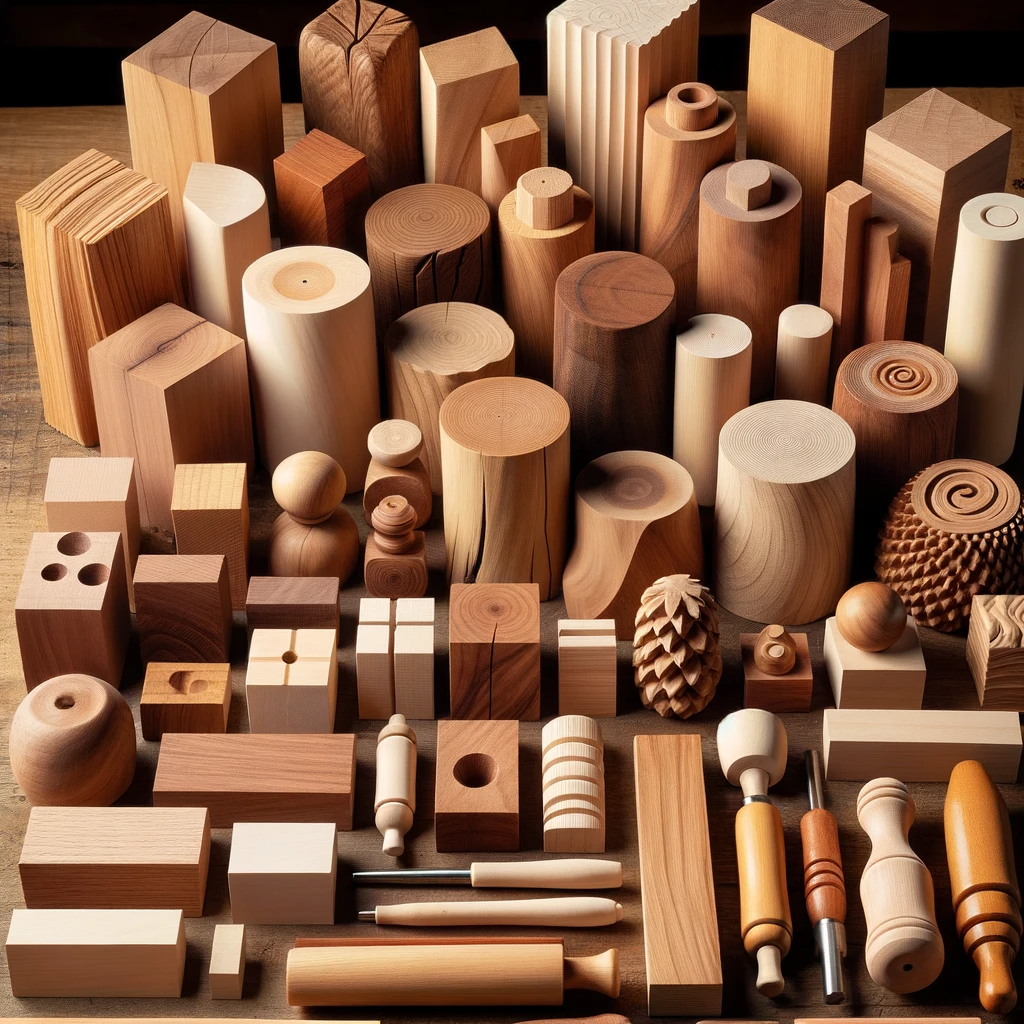When it comes to wood carving, the choice of wood significantly affects the ease of carving and the final outcome. Here are some of the best woods to use for wood carving:
- Basswood: Often heralded as the ideal carving wood, basswood has a fine, even texture, soft consistency, and is light in color. It’s easy to carve and holds detail well, making it a favorite for both beginners and experienced carvers.
- Butternut: Butternut is a softer wood with a fine grain and a light tan color. It’s also known as “white walnut” because it’s related to and looks similar to walnut but is much softer. It’s well-liked for its ease of carving and rich grain.
- Walnut: Known for its rich color and grain, walnut is harder than basswood or butternut, making it more challenging to carve. However, it’s an excellent choice for pieces that require durability and a premium finish.
- Mahogany: This is a classic wood used in carving for its straight grain and workability. It has a reddish-brown color that darkens over time and finishes well. Mahogany is fairly soft compared to other hardwoods, making it easier to work with.
- Cherry: Cherry wood is known for its smooth grain and stability, making it a good choice for detailed work. It’s moderately hard, has a rich color, and finishes beautifully.
- Oak: Oak is a strong, durable wood with a prominent grain. It’s more challenging to carve but is an excellent choice for projects that require strength and longevity.
- Pine: Pine is a softwood that’s readily available and inexpensive. It’s not typically the first choice for detailed carvings due to its grain and potential for knots, but it can be a good option for larger, more rustic pieces or practice.
- Maple: Known for its strength and hardness, maple is a challenging wood to carve but rewards with fine detail and a smooth finish. It’s excellent for intricate work if you have the tools and skills to work with it.

When choosing wood for carving, consider the type of carving you are doing (relief, in-the-round, chip, etc.), your skill level, and the final look you desire. Each wood has its characteristics, from grain pattern and hardness to color and finish quality, influencing the carving process and the finished piece. Additionally, availability and cost will vary by region and specific wood types, so it’s also good to consider local or more easily accessible woods.

